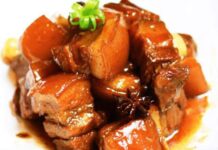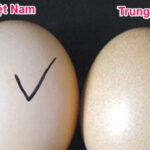Why Do Eggs Have One End Bigger Than the Other?
Have you ever noticed that chicken, duck, quail, and many other types of eggs have an oval shape with one end larger than the other? To understand this phenomenon, let’s delve into the formation of eggs.
Using a chicken egg as an example, an egg essentially consists of four main parts: the egg white, yolk, membrane, and outer shell.
The yolk is formed in the hen’s ovary. When it reaches “maturity,” the yolk leaves the ovary and travels through the infundibulum at the upper end of the fallopian tube into the tube itself. Here, the yolk continues its journey to the enlarged portion of the fallopian tube, where a large amount of albumen is secreted by the hen’s body to envelop the yolk. This is the thick, transparent layer of egg white surrounding the yolk.
Approximately 2-3 hours later, the egg (with the yolk and egg white) is pushed from the enlarged portion of the fallopian tube into a narrower section. Here, the egg’s membrane is formed. After another hour or so, the egg is pushed further into the uterus, which has a thick wall with developed muscles. In the uterus, the egg’s shell is formed, completing the egg’s creation. The egg remains in the hen’s uterus for about 18-20 hours during this formation process. Then, uterine contractions push the egg through the genital tract, after which it is expelled from the hen’s body.

The reason chicken eggs have one larger and one smaller end is due to the process of formation. As the egg descends, the upper end of the fallopian tube compresses it in segments. The end of the egg being pushed causes the egg white and membrane to shift to the left and then to the right, resulting in a larger end. Once the shell is completely formed, the egg is repositioned. Meanwhile, the other end of the egg faces the lower part of the tube and wedges into the fallopian tube to widen it, facilitating the egg’s descent into the uterus. This compression by the fallopian tube creates the smaller end of the egg.
When the egg reaches the uterus, the smaller end faces the tail of the hen.
Why Do Some Eggs Have Double Yolks?
Typically, the yolk descends from the ovary and travels through the fallopian tube. Here, the egg is formed with the egg white surrounding the yolk. Towards the end of the fallopian tube, the shell is formed, and the egg is ready to be expelled. This entire process takes around 24 hours.
In younger hens that have just started laying eggs, the egg-forming process may not be fully developed. Occasionally, the first egg hasn’t formed a shell yet when the second yolk drops. This results in a double-yolked egg. The occurrence of double-yolked eggs is entirely normal.





































